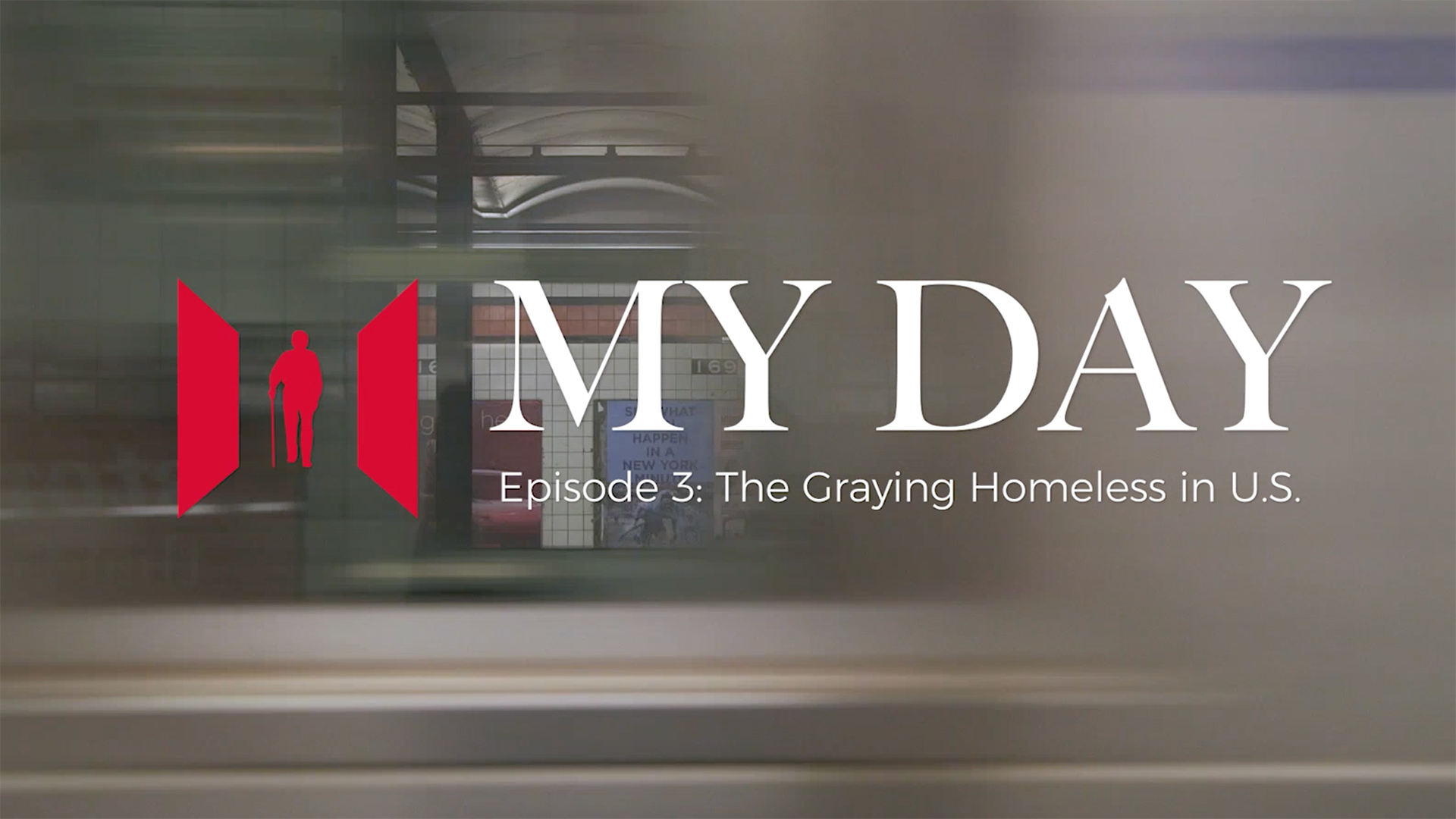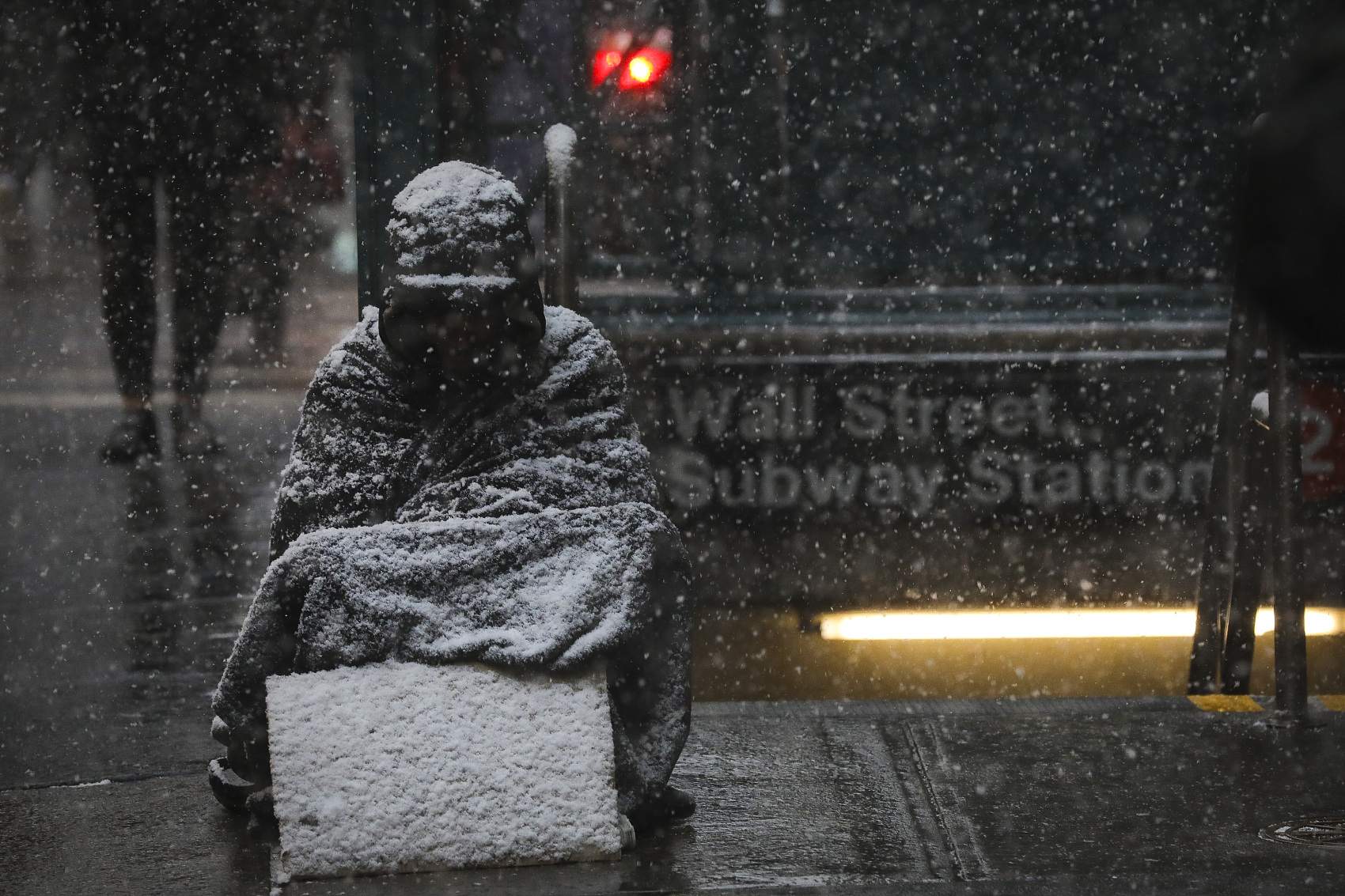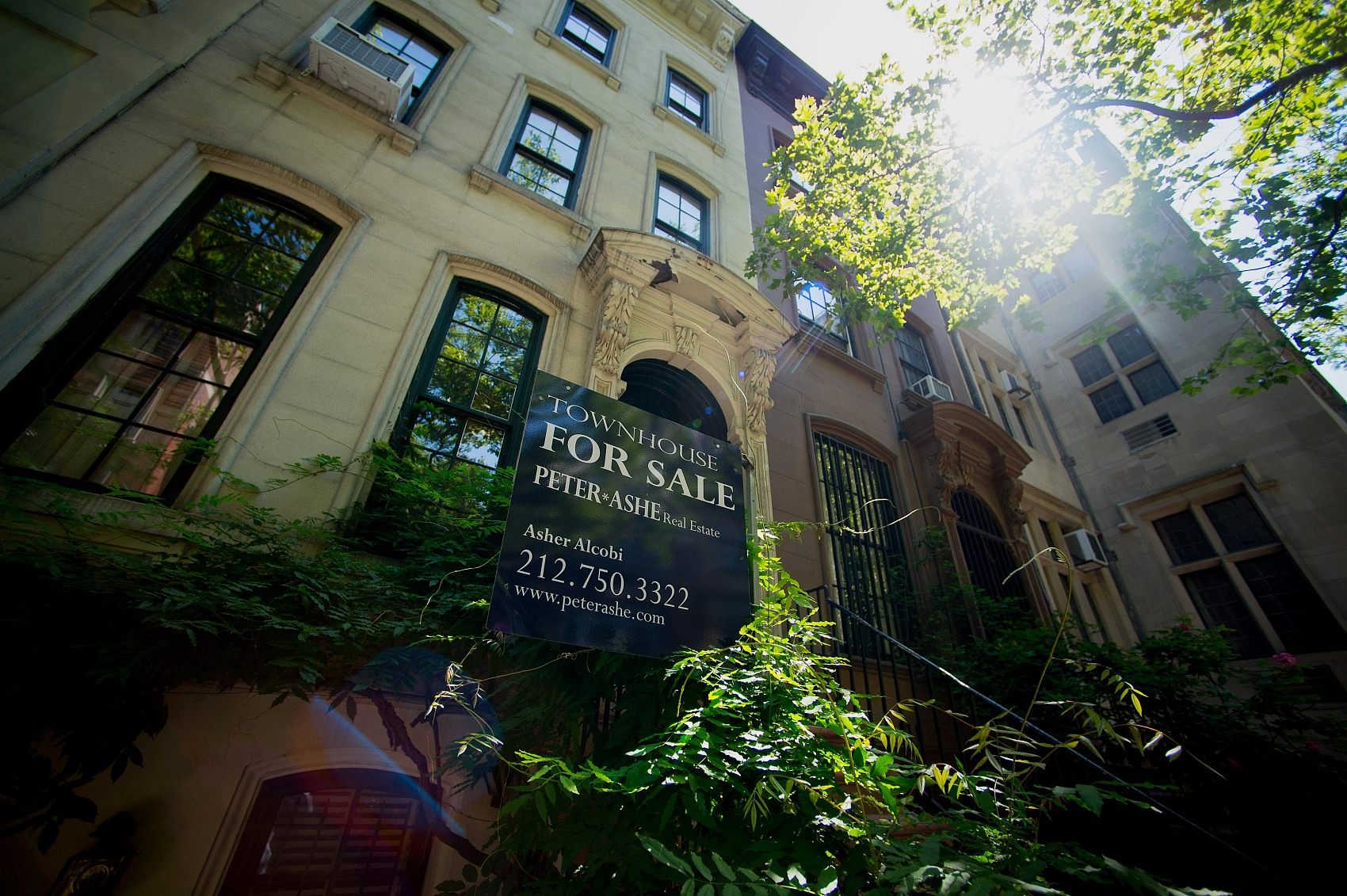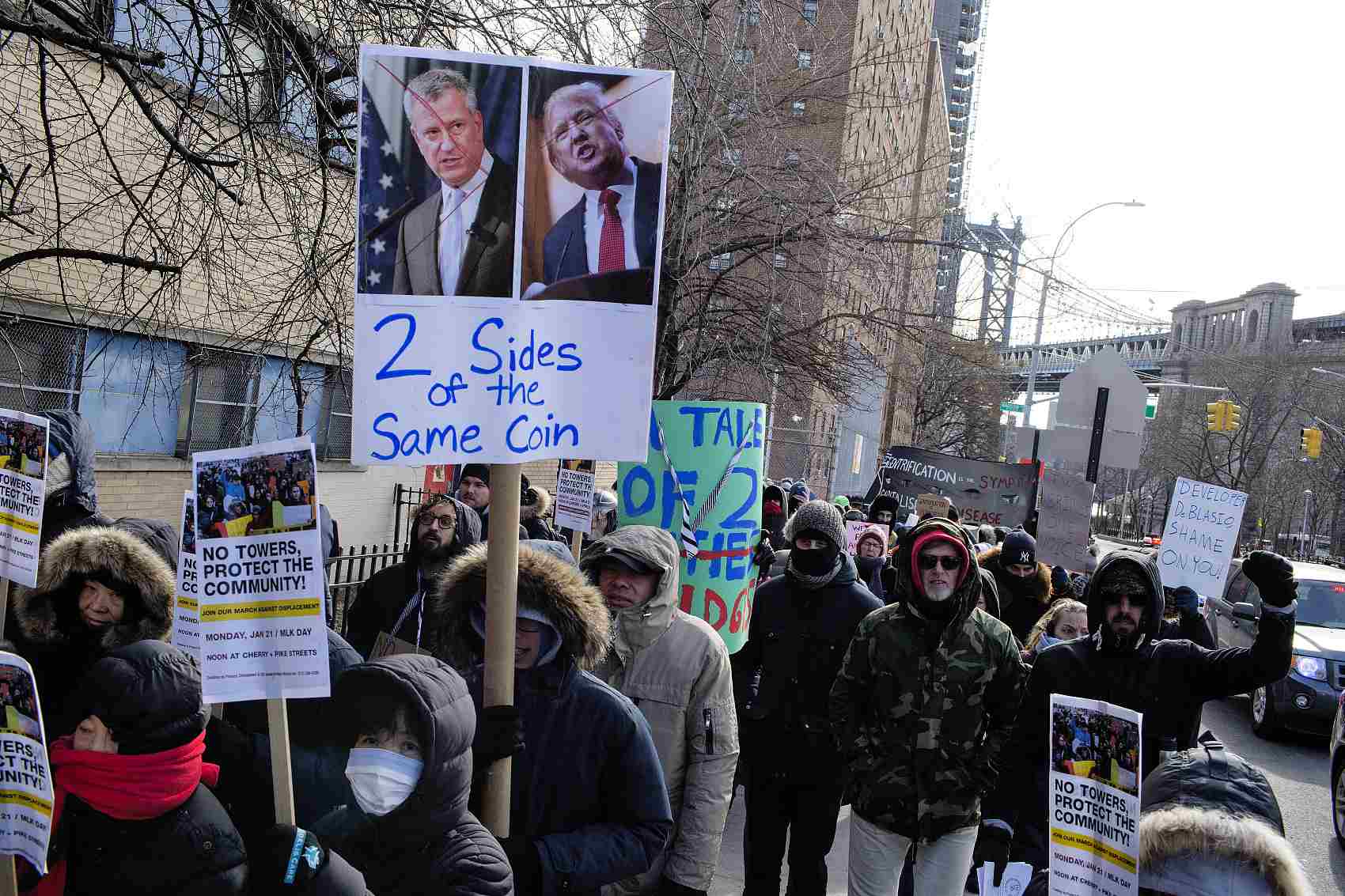
Analysis
13:08, 06-May-2019
Why the homeless in the United States are graying
Updated
14:41, 06-May-2019
By Wang Xiaonan
06:32

The myth of pulling oneself up by the bootstraps to achieve anything is a core American value. This sense of optimism pervades the moguls in Silicon Valley and Wall Street to make obscene amounts of money, fuels scientists to look for the next paradigm-shattering breakthrough and encourages pioneers to go where no one has gone before. But it is also this myth that has contributed to the belief that those who are less fortunate can rise from the pits if they only choose to work hard like the rest of the country.
It is no surprise then that homelessness is a plague that continues to haunt much of urban America. In New York City, scattered among the pockets of gentrification is the largest homeless population of any major city at over 75,000 people, according to the federal agency Housing and Urban Development (HUD). Meanwhile, the plight of the homeless elderly, at a time when they qualify for government benefits such as Medicare and pensions, is one that stands out.
“You never know what tomorrow will bring forth,” says Wendell Payne, a 74-year-old homeless man in New York City. Originally from the Caribbean island of Barbados, Payne immigrated to the United States in the 1970s when the country was experiencing a wage stagnation in those high-inflation years. “When I was growing up, I see my grandparents and the way they lived, and I said that's the way I like my life to be. But it didn't end up like that.”
Payne is one of the 2,600 homeless people aged 65 or older in the Big Apple. Failing to pay the city's surging rents, he has lived on the streets and in the subway station for five years. He would go to the City of New York Human Resources Administration Center for the Aged to eat meals, talk to friends, and watch TV.

A homeless man sits in the falling snow in the Financial District in New York City, January 30, 2019. /Getty Images
A homeless man sits in the falling snow in the Financial District in New York City, January 30, 2019. /Getty Images
According to the Coalition for The Homeless, a service organization offering assistance founded in 1981, around 64,000 homeless adults and children sleep in the city's shelters each night, and thousands more spend their nights on the streets. Nationwide, over 554,000 people, or 17 out of every 10,000 Americans, are homeless.
A distressing phenomenon is that those aged over 50 accounted for 31 percent of the country's homeless population in 2014, according to the HUD. It was already 20 percent higher than in 2007.
A new study polled in New York City, Boston, Philadelphia and Los Angeles, predicts that elderly and homeless individuals will nearly triple by 2030. A more specific estimate is that the number of Americans above 65 years old will grow from 40,000 to 106,000 in over a decade.

A Peter Ashe Real Estate "For Sale" sign is displayed outside of a townhouse in New York, June 23, 2014. /Getty Images
A Peter Ashe Real Estate "For Sale" sign is displayed outside of a townhouse in New York, June 23, 2014. /Getty Images
This worsening homeless situation stands out particularly in affluent East and West coastal cities where protruding prosperity paradox has excluded the homeless seniors from the bonanza.
The reasons for homelessness are many. Aside from the lack of employment opportunities, there is a decline of public assistance for those who want to get back on their feet due to unstable employment and low wages. As such, those who live in poverty are usually just a paycheck or one costly illness away from losing their ability to pay the rent.
Those with little or no income may have worked in jobs with wages that have not kept pace with the country's economic growth. The Economic Policy Institute notes that hourly wages in the past three decades have lagged behind the rise in economic productivity.
This phenomenon affected not only low-wage workers, but those in the middle class as well. It attributes the “dismal wage growth” and the rising inequality to intentional policy choices made by those with wealth and political power, concluding that “fundamental economic forces did not make these trends inevitable.”

Developers, bankers, publicists and politicians attend the opening of the Hudson Yards development on the west side of Manhattan, New York City, March 15, 2019. /Getty Images
Developers, bankers, publicists and politicians attend the opening of the Hudson Yards development on the west side of Manhattan, New York City, March 15, 2019. /Getty Images
In a globalized world, the homeless may also lack the education and job skills to navigate a modern economy. Researchers led by University of California San Francisco concluded as much in their five-year study sampling the homeless in New York City, Boston and Los Angeles County. The research shows that only 16 percent of participants who became homeless after 50 years old had degrees higher than high school diplomas and 63 percent worked unskilled or semi-skilled jobs.
A 2019 report from the University of Pennsylvania supports this notion, noting that contemporary homelessness disproportionately affects those born within 1955 to 1965, or the latter half of the post-WWII baby boom. Researchers of the study conclude that their formative years coincided with the recessions in the 1970s and 1980s, as well as crowded labor and housing markets that saw greater competition in those areas. Meanwhile, housing prices surged and neighborhoods saw increasing gentrification.

Lower East Side residents join housing rights activists outside the first of the "Two Bridges" luxury towers to be built in New York City, January 21, 2019. /Getty Images
Lower East Side residents join housing rights activists outside the first of the "Two Bridges" luxury towers to be built in New York City, January 21, 2019. /Getty Images
Local governments such as New York City's have been criticized in recent years for their sluggishness in providing affordable housing. The Coalition for the Homeless said in an April report that NYC mayor Bill de Blasio's plan to reduce homelessness has failed. The plan's meager goal of reducing the shelter population by 2,500 is inadequate, and that the mayor's resistance to building more permanent housing for the city's homeless will result in their increase by 5,000 people within the next three years.
The coalition suggests that more affordable housing units be built and subsidies provided to the needy, as well as regulation to protect the formerly homeless from being evicted. However, a spokesperson for the mayor's office says that there is an “aggressive affordable housing plan” with 10,000 apartments for the homeless set aside, according to local radio station WNYC.
As structural forces and government inertia reinforce the plight of the elderly homeless, everything appears to be bleak. But the American optimism seems to reach those even in the most unfortunate circumstances. “Whatever will be will be, and I do the best I can,” says Payne.
This is the third episode of our “Aging Society” series. You can watch the first two episodes here: Elders in South Korea stay young by choosing to never retire; Old age in rural China. Stay tuned for more stories in the coming weeks.

SITEMAP
Copyright © 2018 CGTN. Beijing ICP prepared NO.16065310-3
Copyright © 2018 CGTN. Beijing ICP prepared NO.16065310-3